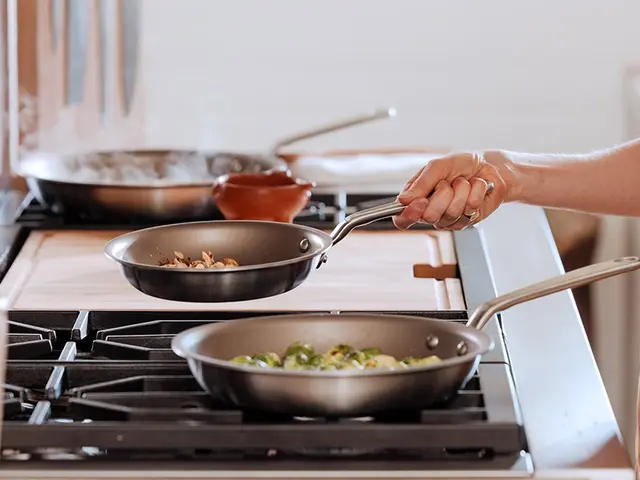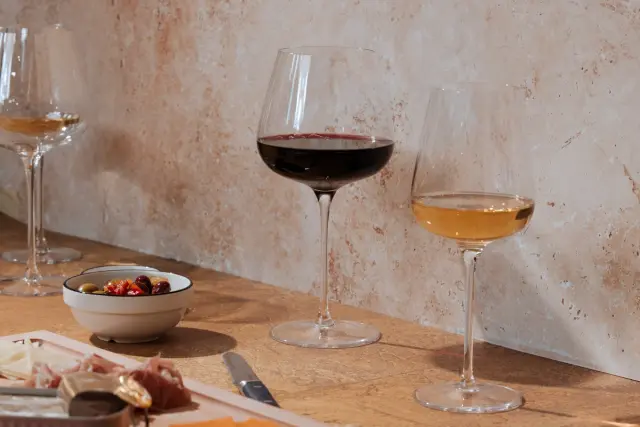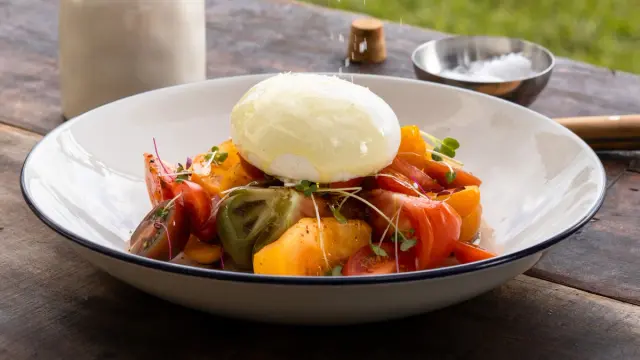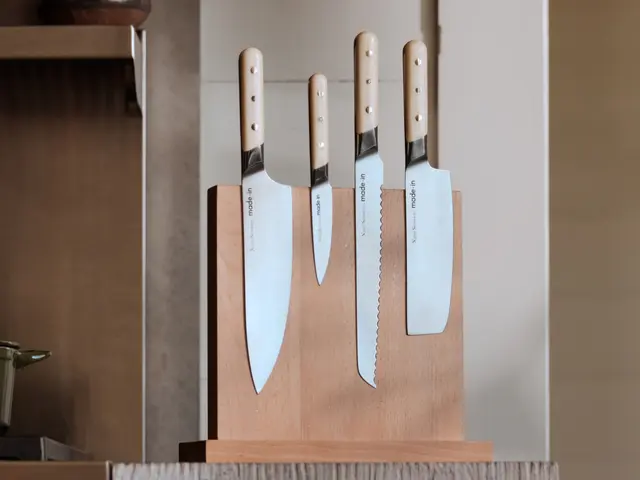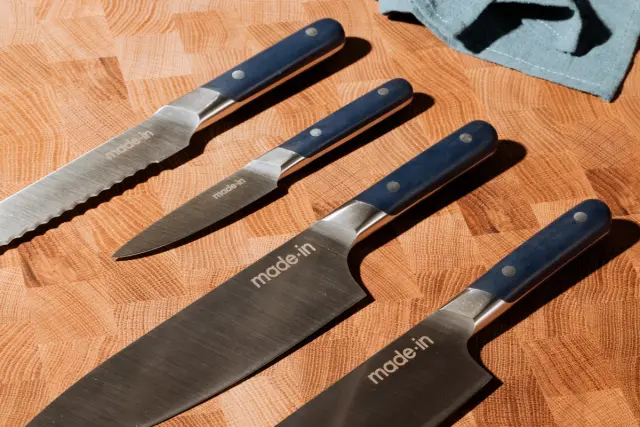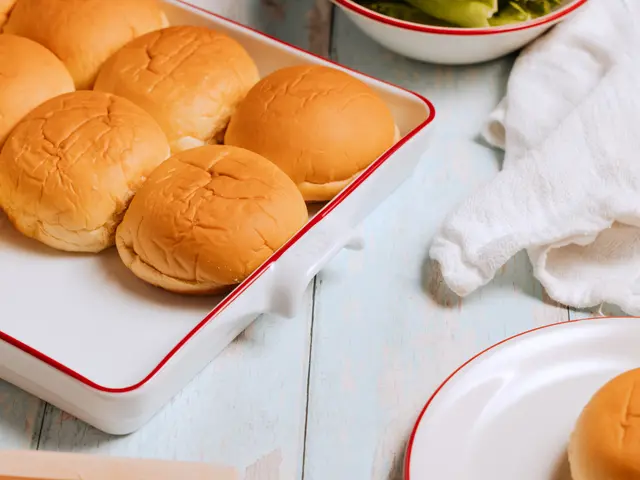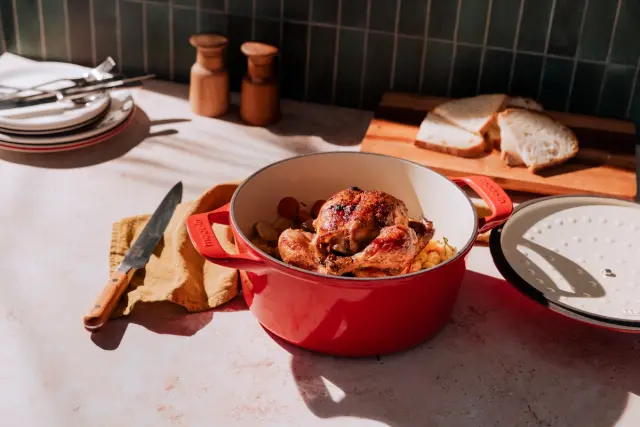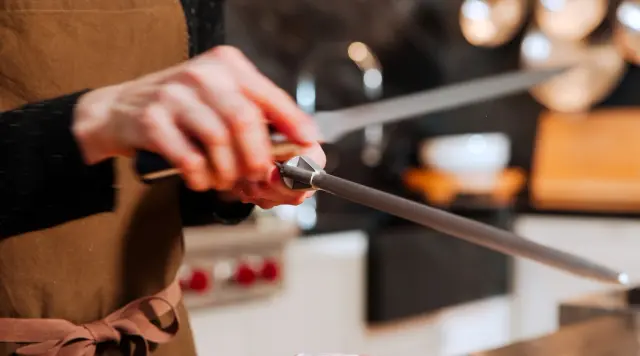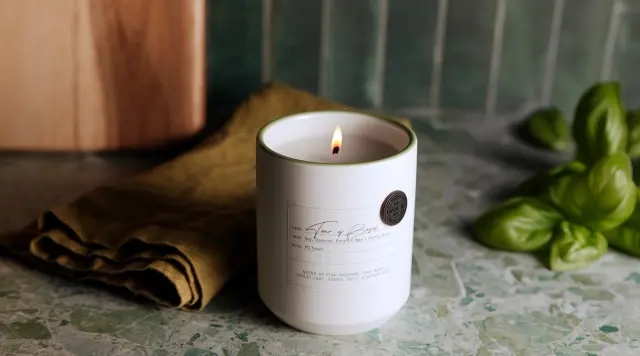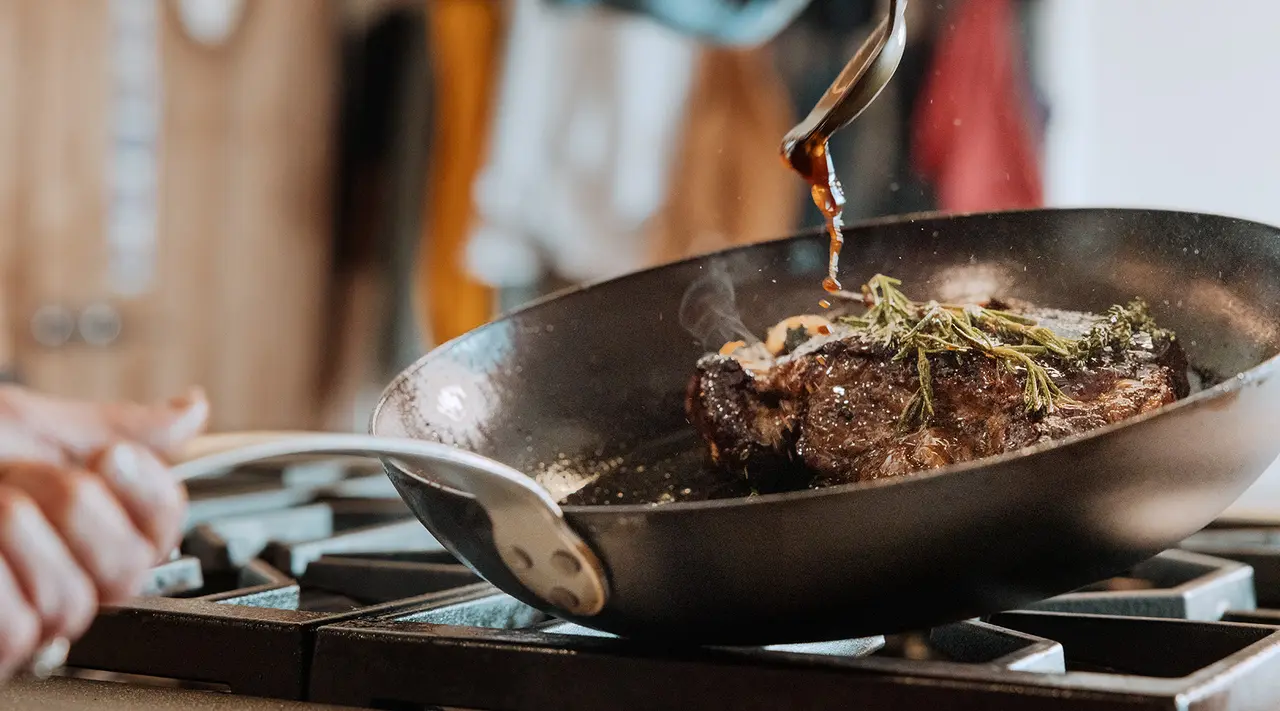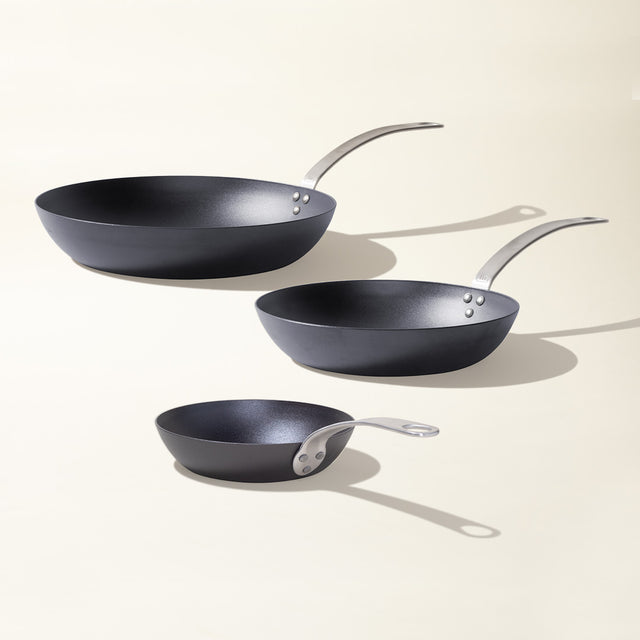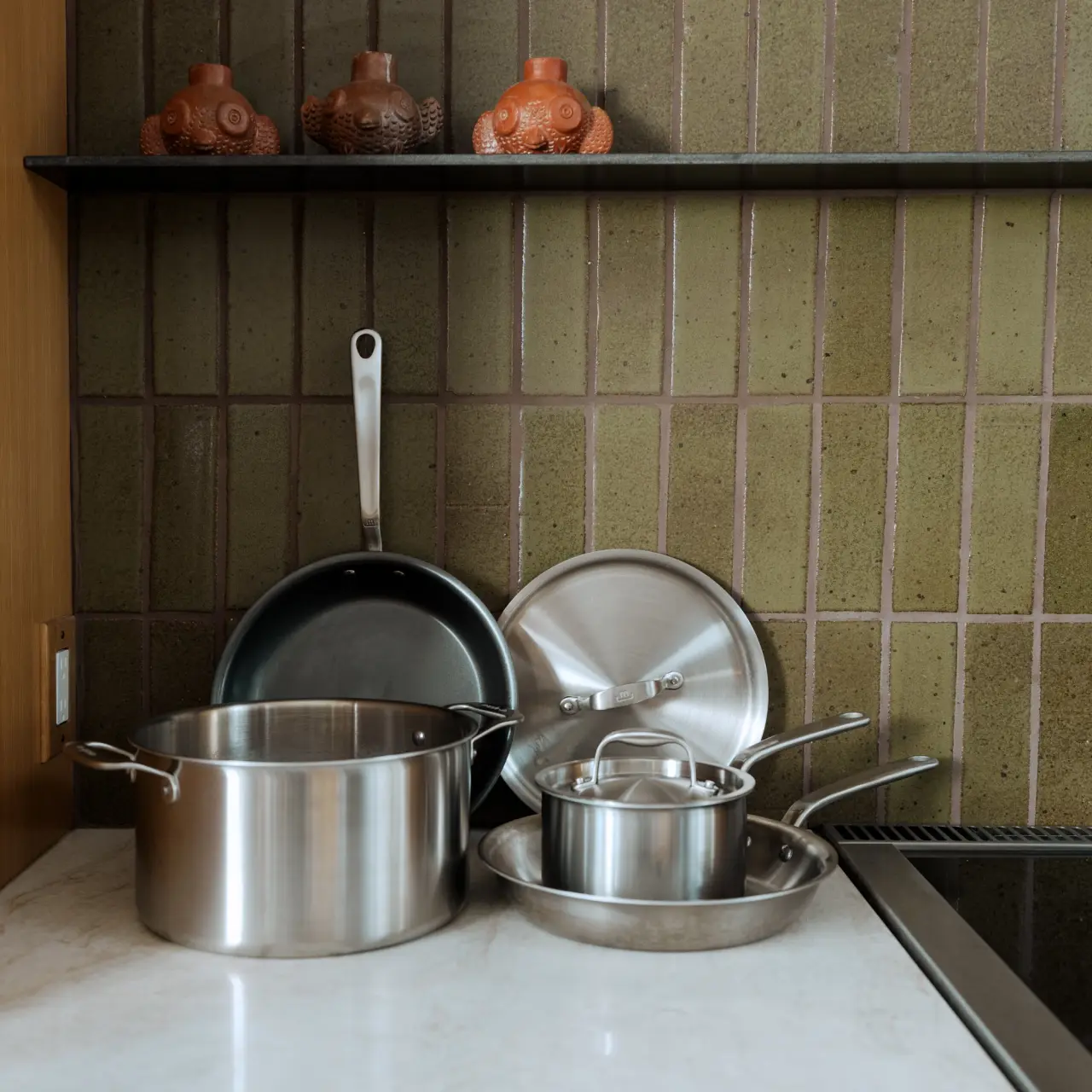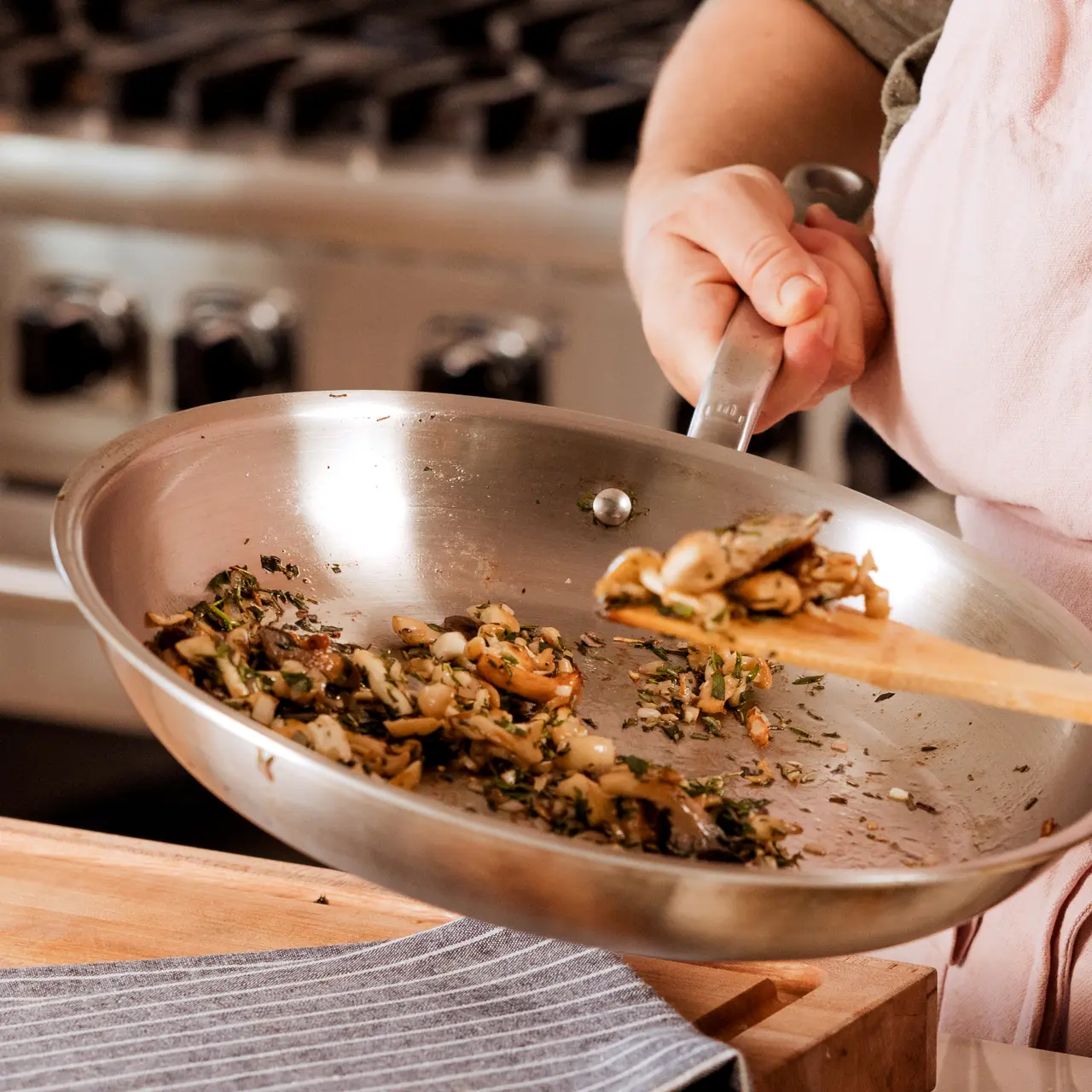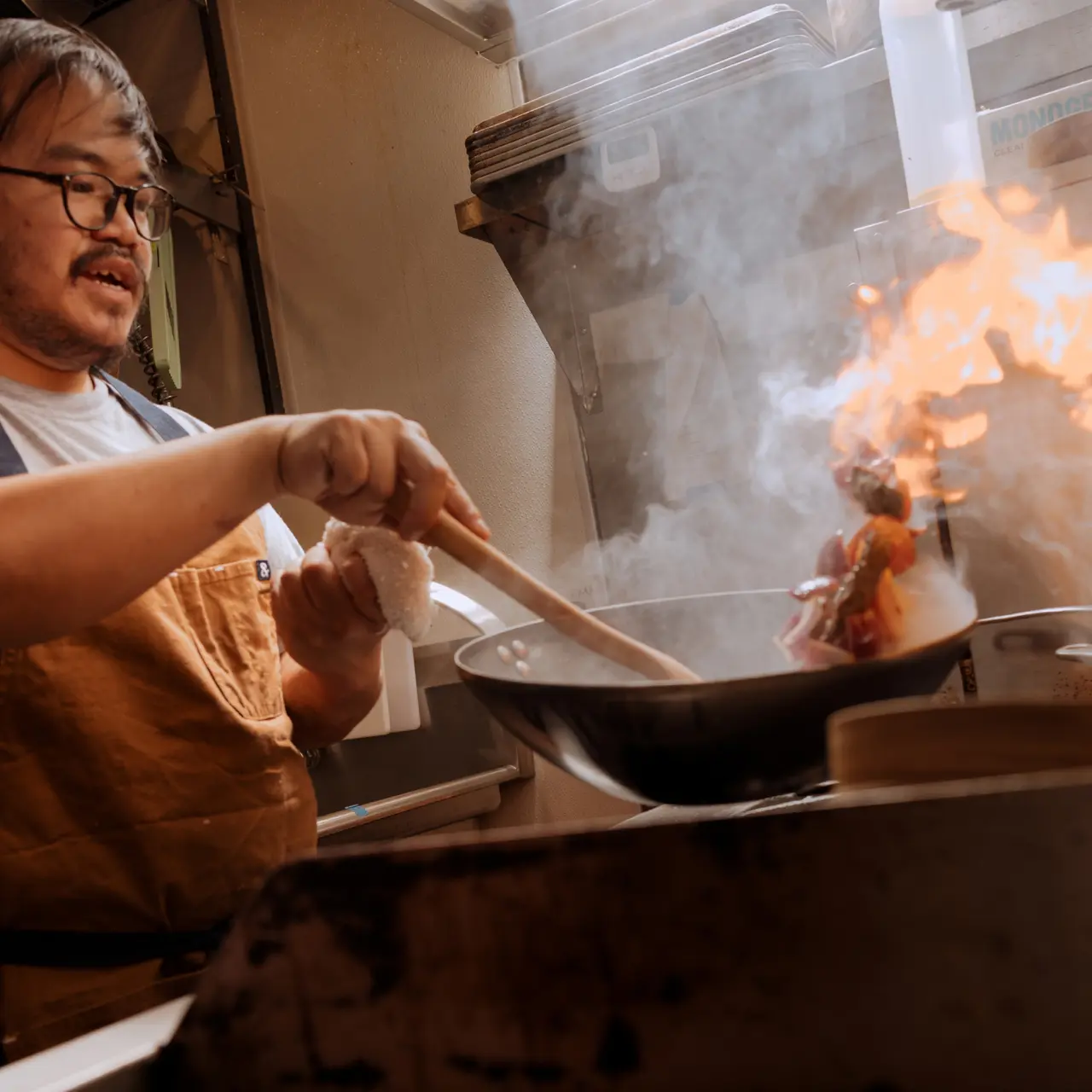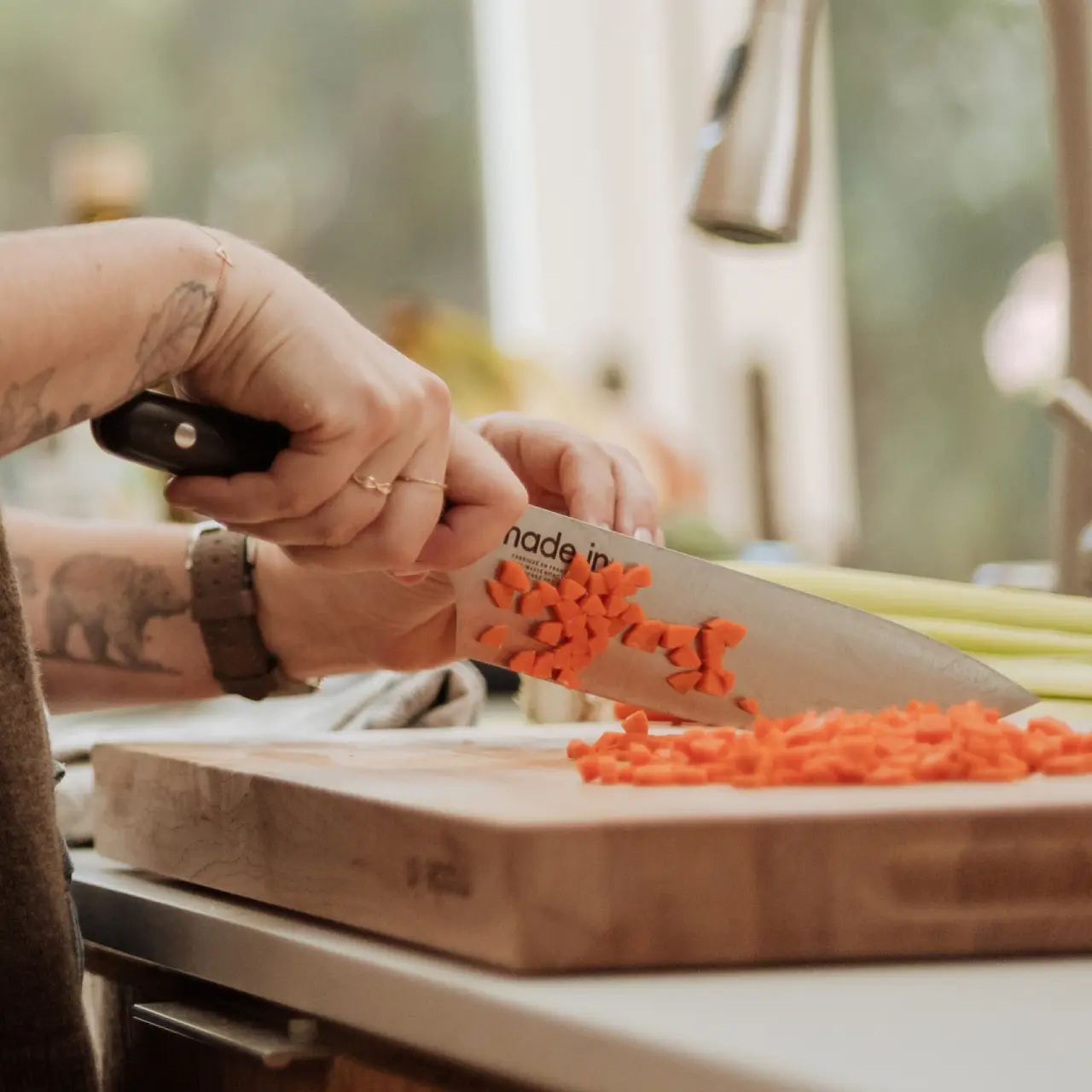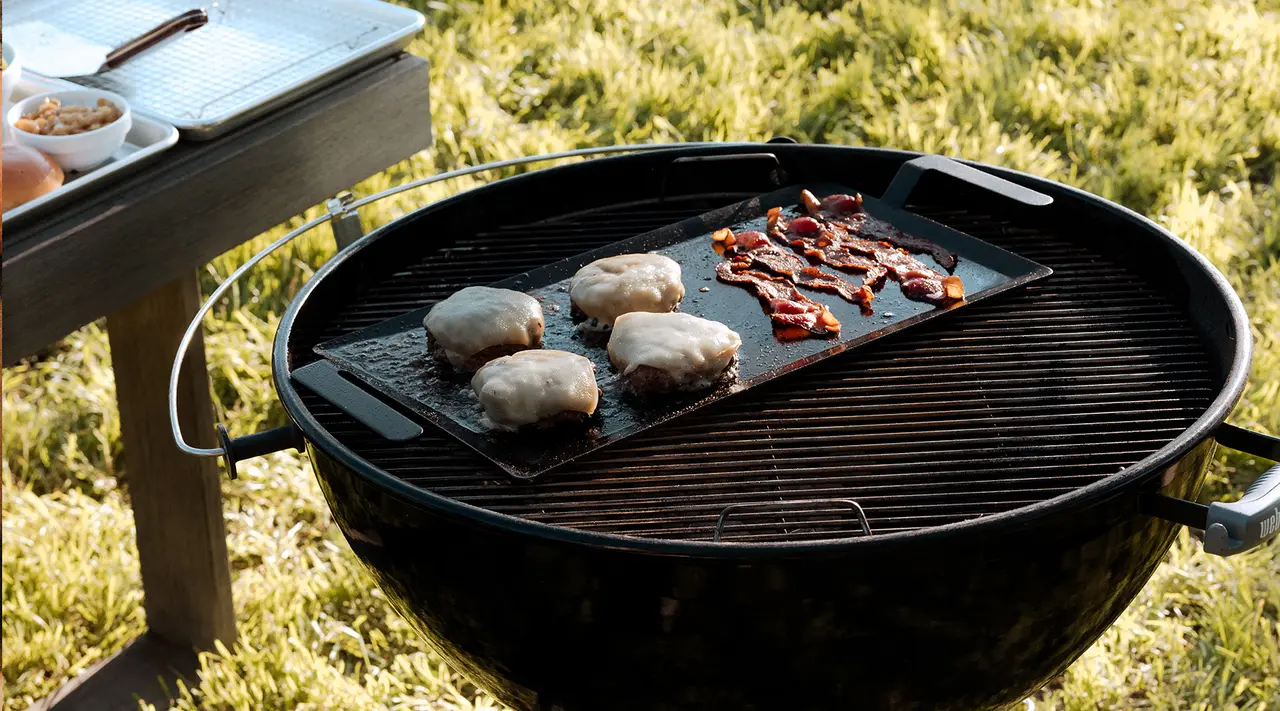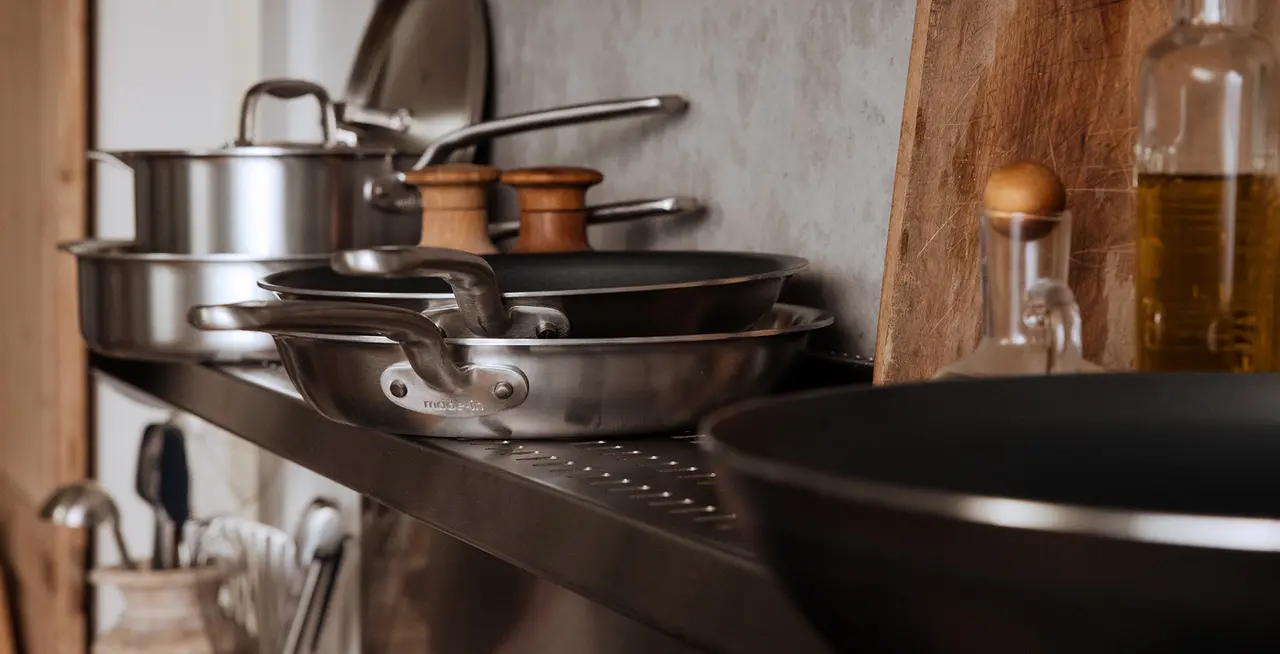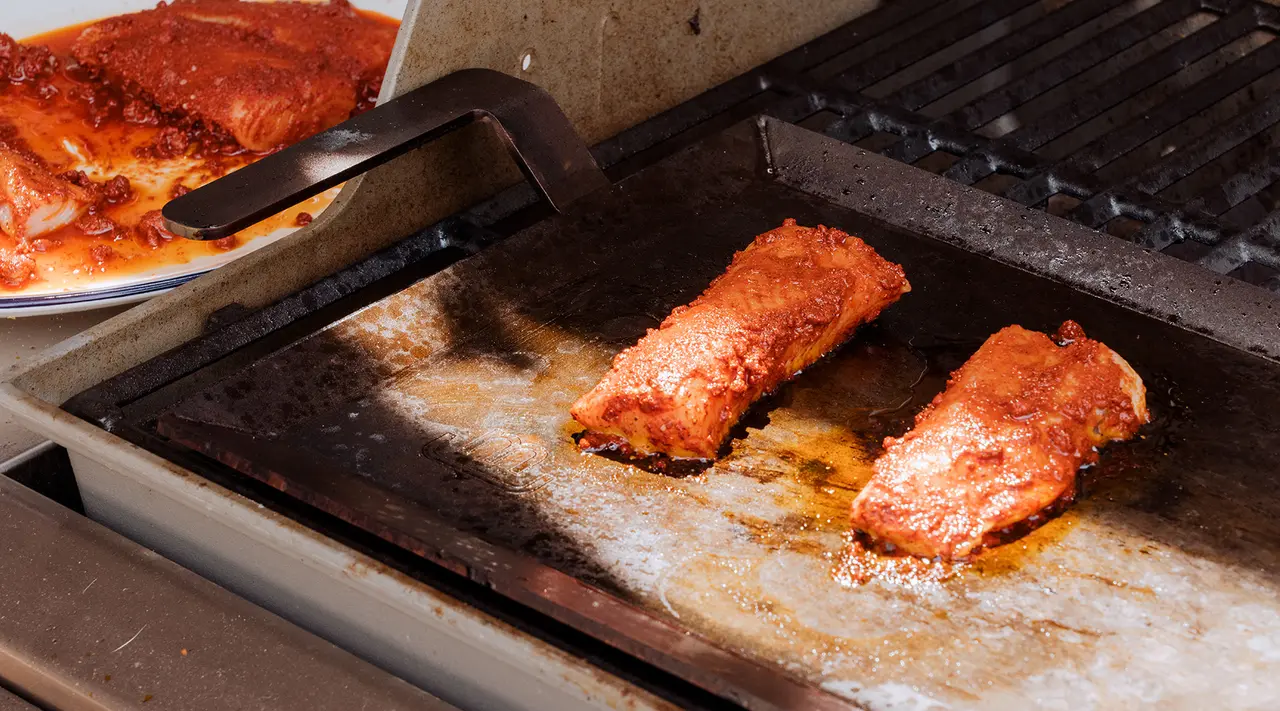Beloved by professional chefs and home cooks alike, carbon steel cookware is some of the best on the market. It offers the perfect blend of searing power, responsiveness, and naturally non stick surface, all in a lightweight, easily maneuverable package that (with proper care) will last you for years, if not decades.
Here’s a glance at why we love this material so much, and think it's earned a spot of honor in every kitchen.
What Is Carbon Steel?
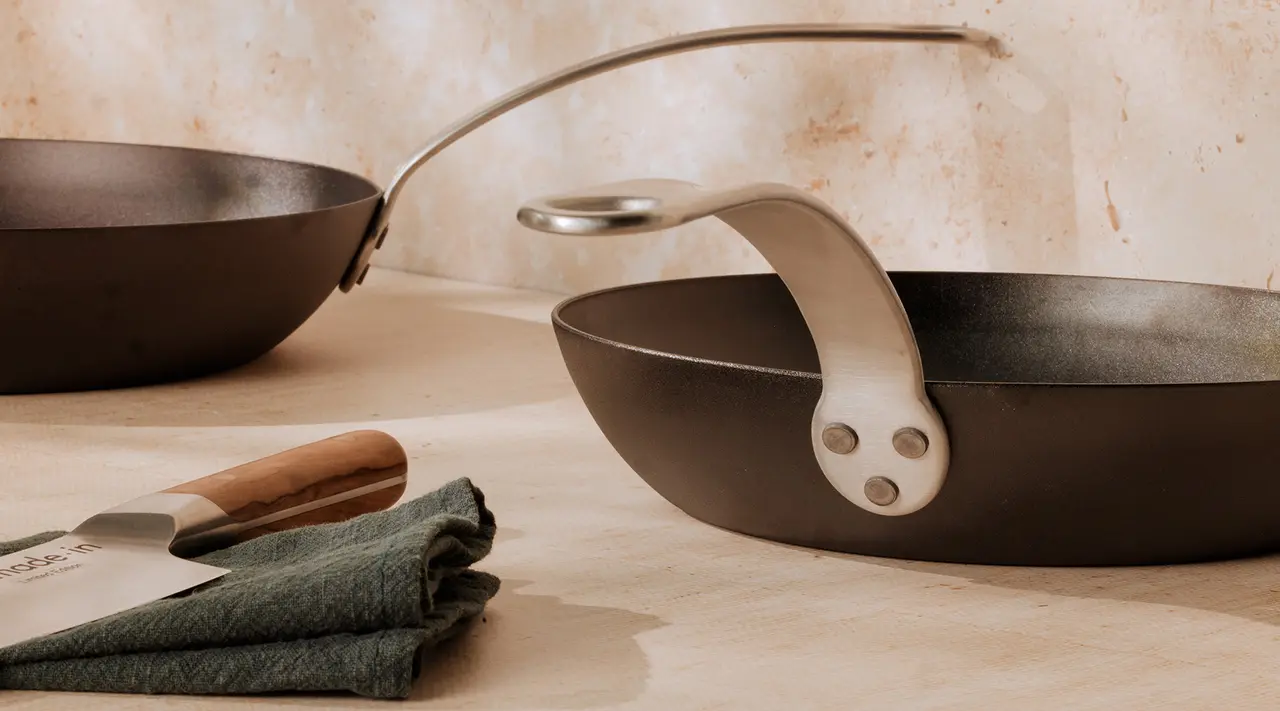
Carbon steel is made from an alloy, or mixture, of iron and carbon—the same components as cast iron. Unlike cast iron, however, which is made by pouring the molten alloy into a mold, carbon steel is first stamped into a single sheet and bent into shape. Carbon steel comes in many different shapes thanks to its versatility and high-heat capabilities, including woks, frying pans, griddles, and even roasting pans.
This construction makes for a tougher, more lightweight, and less brittle material than heavy, crackable cast iron. Overall, we like to think of carbon steel as a great compromise between cast iron and stainless, as it combines the lightweight feel of stainless steel with the naturally non stick, built-up patina of cast iron.
Why Use Carbon Steel Cookware?
At a glance, here are just a few of the reasons we think carbon steel is worth adding to your cookware collection.
- Tough and durable
- Quick and even conductor of heat
- Great for cooking a wide variety of foods
- Naturally non stick alternative to traditional coated non stick
Advantages of Carbon Steel Cookware
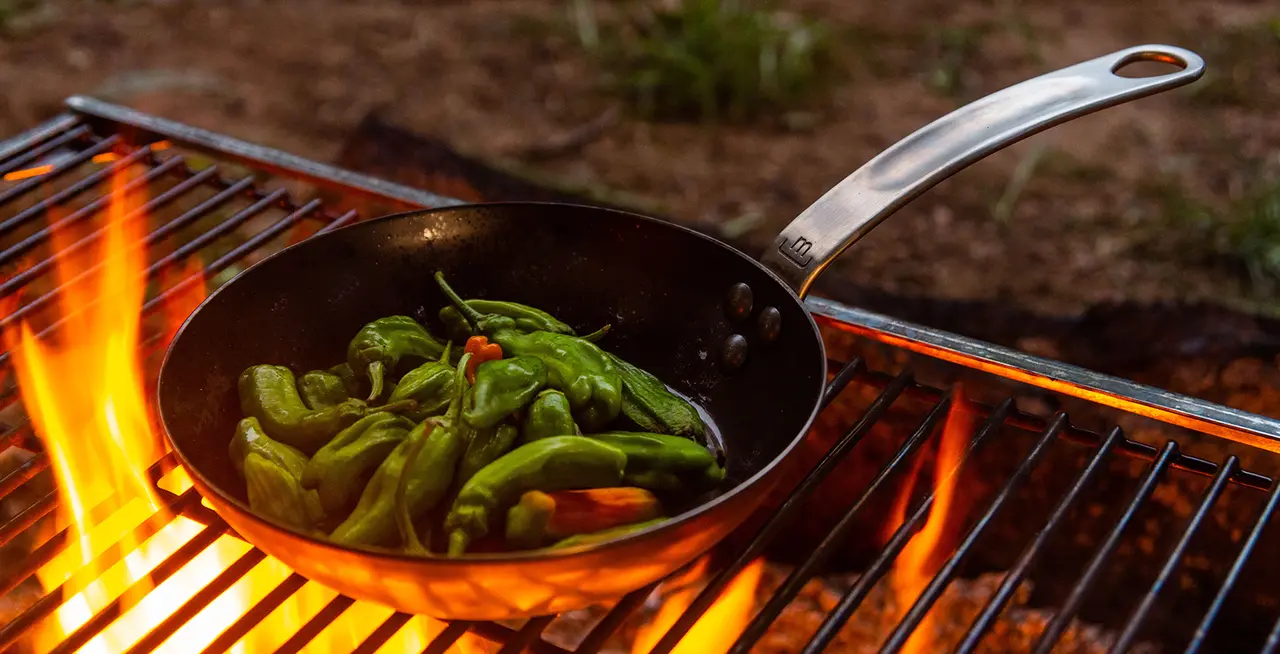
The joys of carbon steel cookware are many: here are the main ones you should know about.
1. Quick, Even Heating
One great reason to love carbon steel is its ability to circulate heat evenly across the surface of the pan—a quality you definitely want in your cookware, since it allows for consistent browning and fewer hot or cold spots.
Carbon steel is better at this than cast iron: whereas cast iron may take as long as ten minutes to fully heat up (and much longer to cool down), carbon steel heats up in just a few minutes.
2. Long-lasting Durability
Carbon steel is an incredibly tough material: not only can it withstand temperatures of up to 1000F—ours, for example, is heat-safe up to 1200F—but you can reseason it an infinite number of times to build the coating back up, no matter how long it’s been since you reached for it. It’ll last just as long as your favorite cast iron or stainless steel pan, if not even longer.
3. Naturally Non Stick
As we mentioned, carbon steel can be seasoned to non stick perfection by adding a layer of neutral oil to your pan and baking it until it develops a smooth, polymerized layer. You’ll also continue to build up the seasoning each time you use your pan—even more so if you tend to cook lots of fatty foods, like bacon.
4. Lightweight Construction
Carbon steel is made from an alloy of carbon and steel, just like cast iron. Yet because carbon steel has a smaller ratio of carbon to iron than cast iron—our carbon steel pans contain only 1 percent carbon, whereas a typical cast iron pan might contain 2-4 percent—carbon steel is the lighter option.
For example, our 12” Carbon Steel Skillet weighs only 4.5 pounds, whereas our 11” Enameled Cast Iron Pan weighs in at 5.8 pounds.
5. Versatility for Various Cooking Methods
Bake, sear, stir fry, grill, roast—you can do all of these (and more) in carbon steel. The high heat resistance, durability, and responsiveness of carbon steel make it one of the most versatile pans in our collection, equally well-suited to eggs and fish fillets as it is to paella and burgers.
One important aspect of carbon steel to note is that it's a reactive material, meaning it has a chemical reaction with acidic ingredients like wine, tomatoes, citrus, and vinegar. Cooking with these ingredients in carbon steel by no means spells out the end of your pan, but it may need a reseasoning afterwards.
How Carbon Steel Enhances the Cooking Experience

Once your carbon steel pan is in hand, here’s what you can expect when you fire up your stove or grill and get to cooking with it.
Adaptability to Different Stove Types
Carbon steel is a cooktop chameleon: you can use it on everything from an induction stove to a charcoal grill to a single-burner gas camping stove.
Control Over Cooking Temperature
Carbon steel’s responsiveness is another reason to compare it with stainless steel. While carbon steel will stay ripping hot for as long as you need it to, you can also quickly turn down the temp if it starts to get a little too smoky—crucial for avoiding burnt or overcooked food.
Superior Searing and Browning Capabilities
Carbon steel is legendary when it comes to getting food brown and crispy—just as good, in fact, as stainless steel, our other top pick for cooking steaks, chicken thighs, and skin-on fish fillets.
Maintenance and Care of Carbon Steel Pans
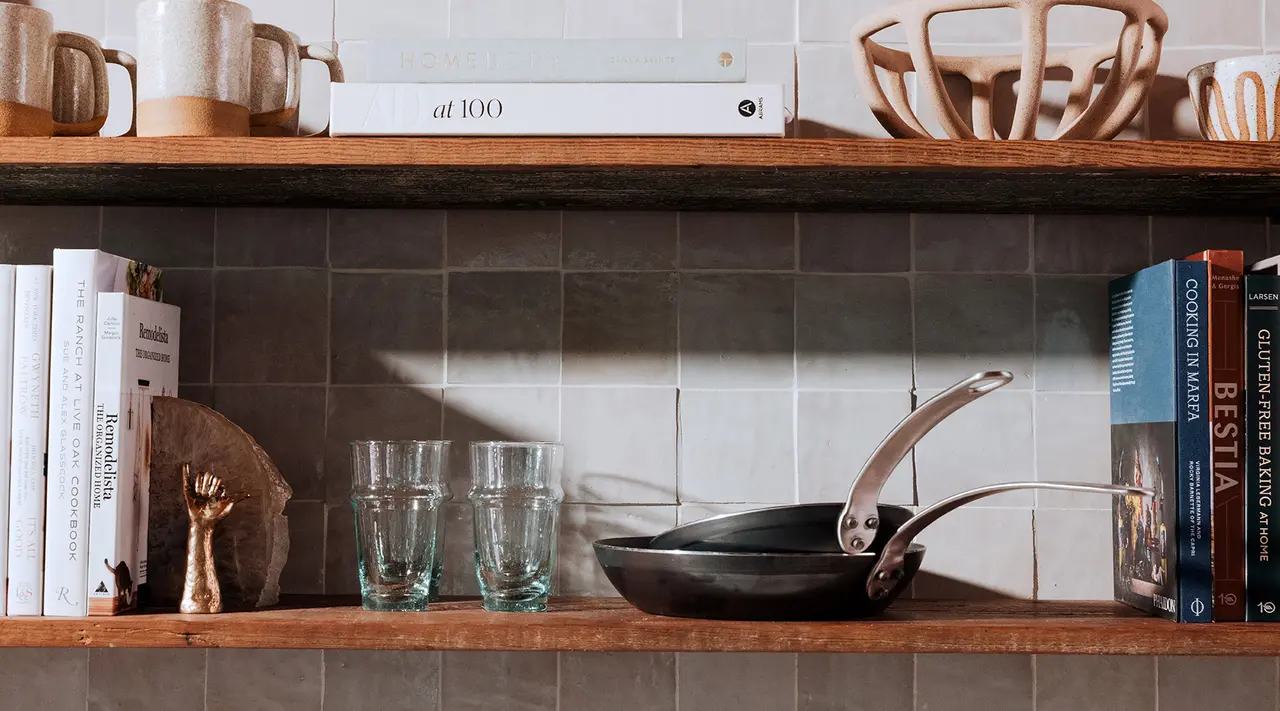
Carbon steel is a touch more complicated to maintain than a stainless steel or non stick pan—but not by much. Your main concern should be with maintaining the seasoning on your pan, and reseasoning it whenever it starts to wear down. This protects your pan from rust and corrosion, along with keeping it adequately non stick.
Ready to Shop?
Tough, durable, yet sensitive enough to handle the most delicate of dishes, we’d recommend carbon steel to even the most novice of home cooks. If you’re willing to do a little extra work seasoning and maintaining it, these pieces will serve you well for decades.
